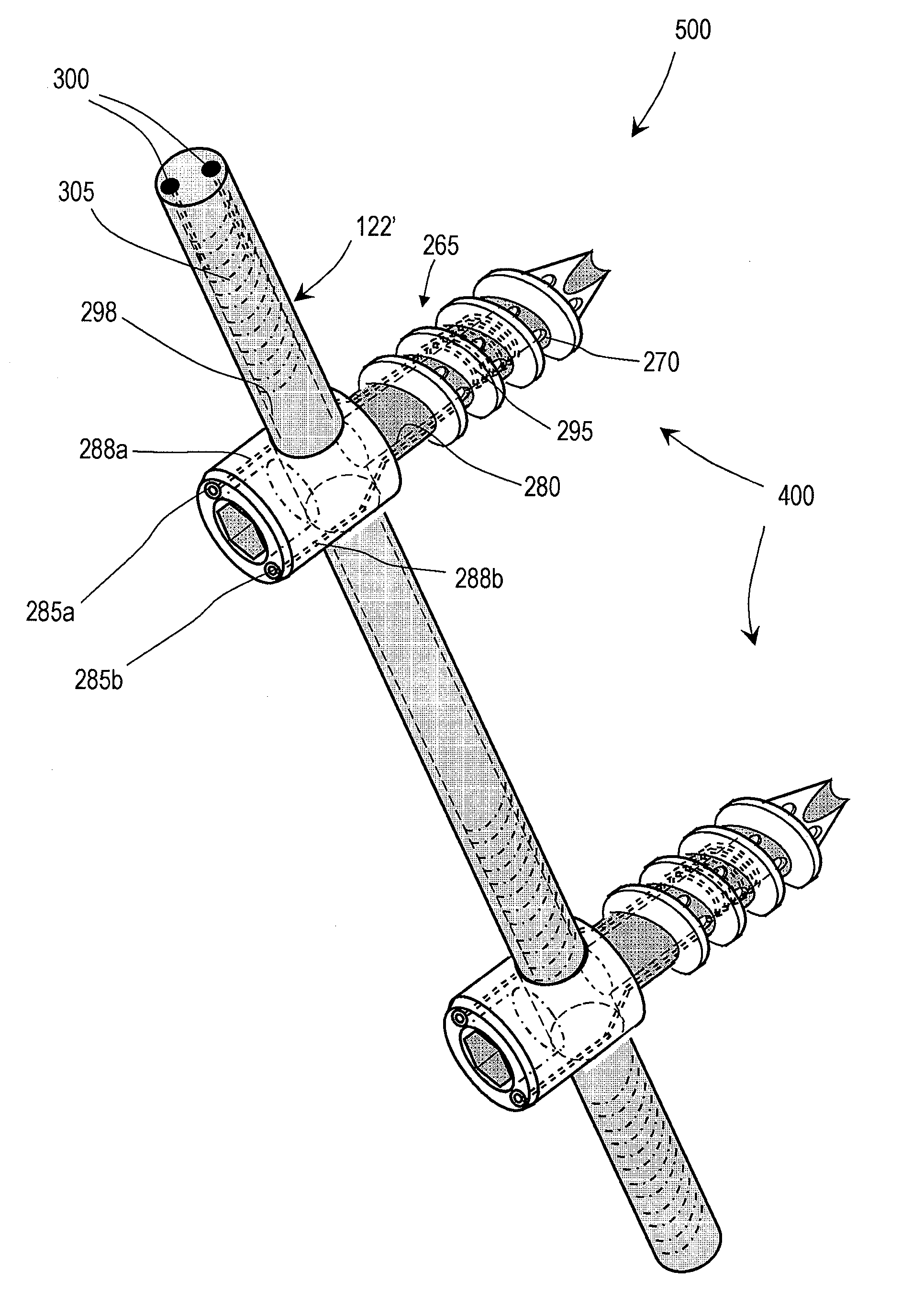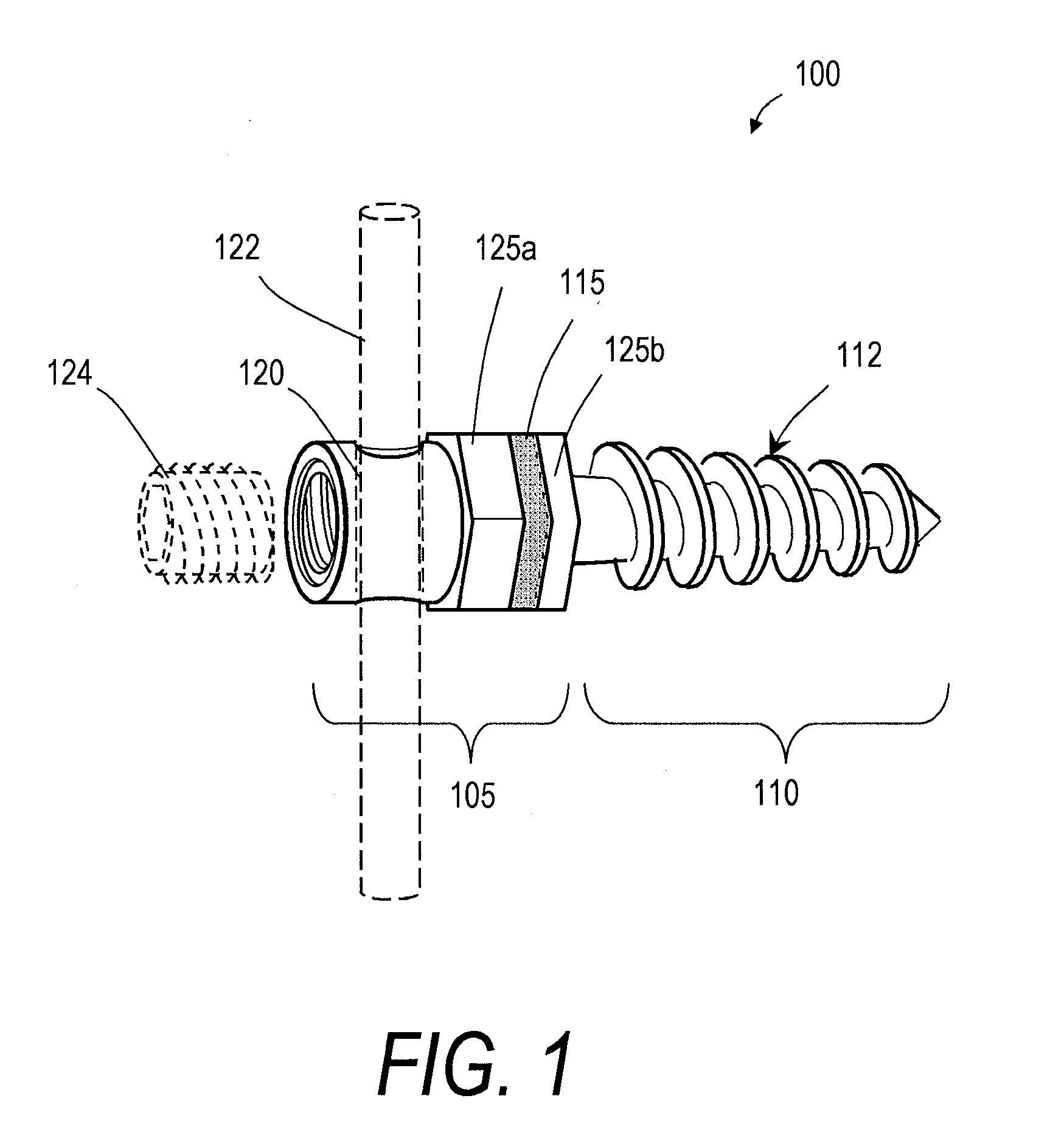Spine treatment devices and methods
a technology for spine disorders and treatment devices, applied in the field of spine treatment devices and methods, bone fixation devices, etc., can solve the problems of increased risk, uncertain outcome and efficacy of these treatments, and high risk of fusion procedures
- Summary
- Abstract
- Description
- Claims
- Application Information
AI Technical Summary
Benefits of technology
Problems solved by technology
Method used
Image
Examples
Embodiment Construction
[0025]FIGS. 1 and 2 illustrate one embodiment of a bone fixation device 100 that can be used in a rod and pedicle screw system for spine stabilization, either fusion or dynamic. The device has a first end portion or head portion 105 and a second end portion or shaft portion 110 that can be introduced into a bore in a vertebra or bone V (see FIG. 2). In one embodiment, the single or multiple-flight threads 112 are preferably of a self-tapping type. As shown in FIG. 2, a resilient polymer member 115 can be disposed intermediate the head portion 105 and the shaft portion 110, and within a cavity 110a of the shaft portion 110. In the illustrated embodiment, the head portion 105 can be coupled to an elongated element 118 that extends axially within an elongated region of the resilient polymer member 115. A surface 119a of the elongated element 118 and a surface 119b of the shaft portion 110 can have any suitable texture or features for adherence to the polymer 115. The head portion 105 a...
PUM
 Login to View More
Login to View More Abstract
Description
Claims
Application Information
 Login to View More
Login to View More - R&D
- Intellectual Property
- Life Sciences
- Materials
- Tech Scout
- Unparalleled Data Quality
- Higher Quality Content
- 60% Fewer Hallucinations
Browse by: Latest US Patents, China's latest patents, Technical Efficacy Thesaurus, Application Domain, Technology Topic, Popular Technical Reports.
© 2025 PatSnap. All rights reserved.Legal|Privacy policy|Modern Slavery Act Transparency Statement|Sitemap|About US| Contact US: help@patsnap.com



